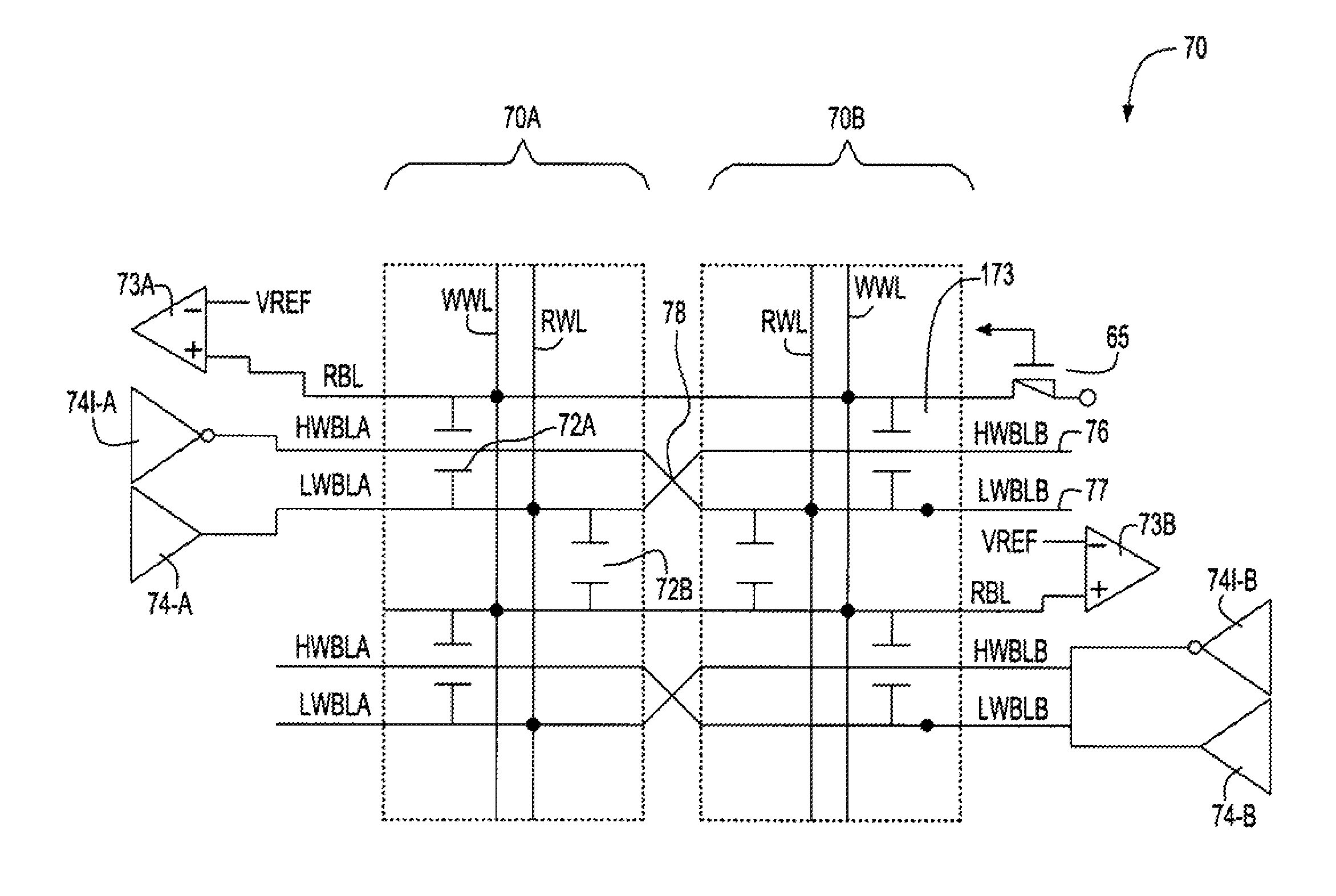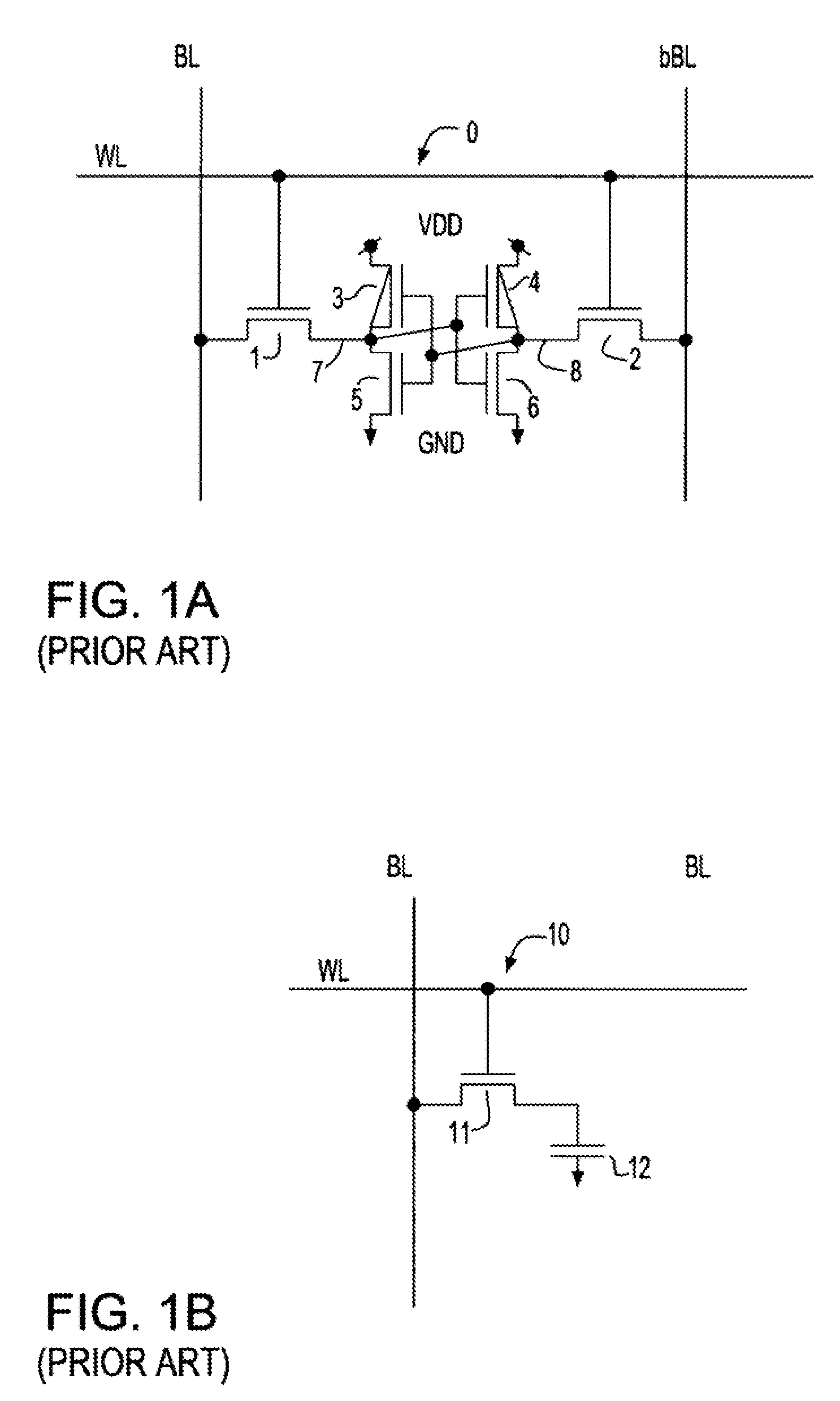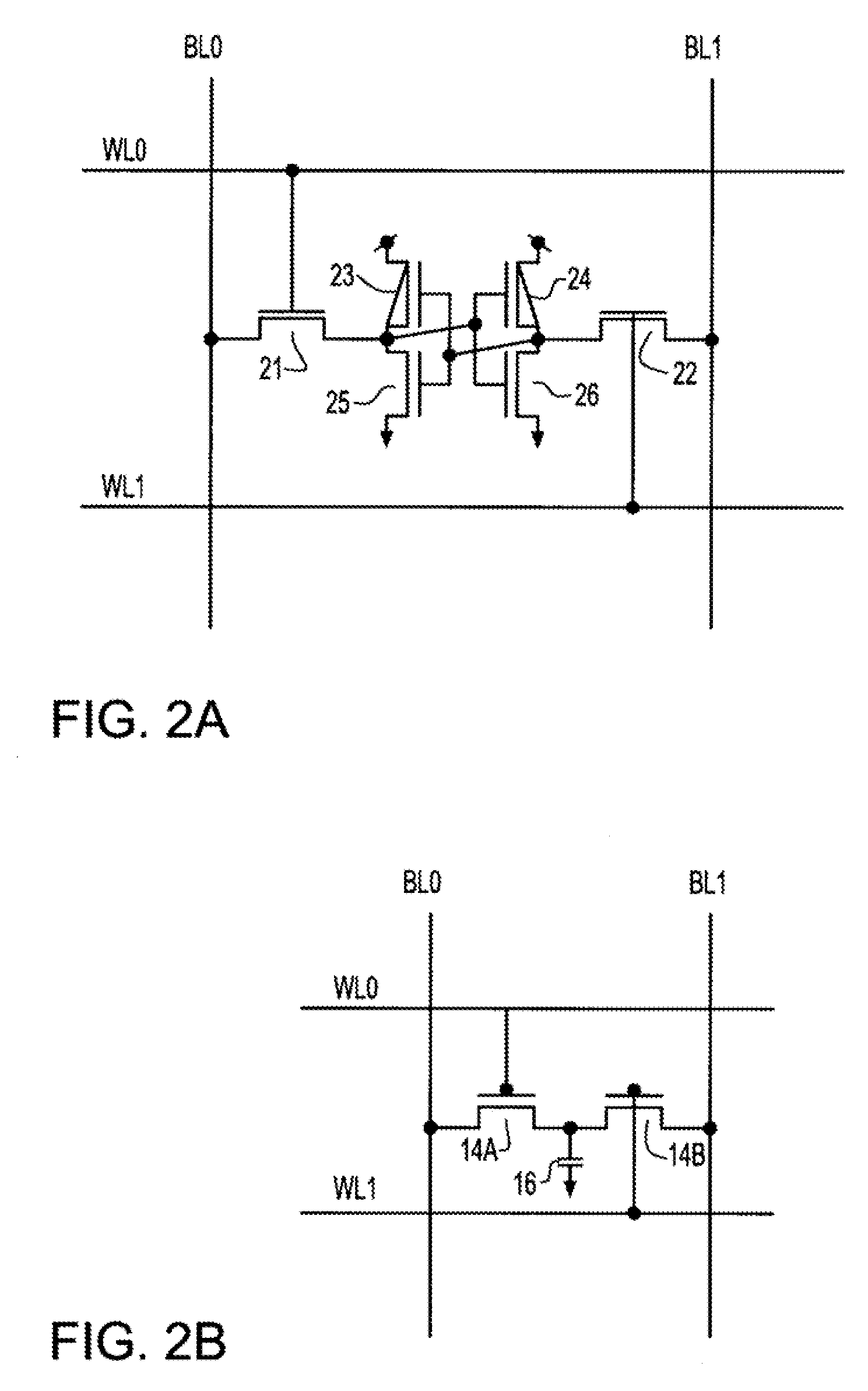Three dimensional twisted bitline architecture for multi-port memory
a multi-port memory and bitline technology, applied in the direction of information storage, static storage, digital storage, etc., can solve the problems of data contention on the common bl, potential rbl and wbl coupling noise, and difficulty or potential inability to perform simultaneous read and write operations, so as to reduce differential mode noise
- Summary
- Abstract
- Description
- Claims
- Application Information
AI Technical Summary
Benefits of technology
Problems solved by technology
Method used
Image
Examples
first embodiment
[0034]Unlike the first embodiment, each RBL is extended into two memory sections 70A and 70B. They are directly coupled to the corresponding sense amplifier 73 together with the other input VREF. On the other hand, each WBL in a column is divided into two local WBL (LWBLA and LWBLB). Each memory section of the column further contains a hierarchical write bitline (HWBLA and HWBLB). The HWBLA and HWLBLB are arranged over the LWBLA and LWBLB in another metal layer. LWBLA and LWBLB are coupled to the HWBLB and HWBLA respectively by vertically twisting them at the twisting area 78. The LWBLA and HWBLB in a row 0 are coupled to write drivers 74A and 74IA located at the edge of the memory section A.
[0035]Similarly, the LWBLA and HWBLB in a row 1 are coupled to the write drivers 74B and 74IB located at the edge of the memory section B. This interleaved circuit arrangement makes it easy to accommodate the write driver circuitry. Optionally, both all drivers 74A, 74IA, 74B and 74IB may be arr...
second embodiment
[0036]An advantageous feature of this invention is that the write drivers 74 and 74I drive the corresponding HWBLA connecting to LWBLB through vertical twist 78 and drive LWLBLA connecting to HWLBLB in the opposite direction (with the opposite polarity). Thus the opposite polarity of the signals received in the adjacent RBL cancels the coupling noise to the adjacent RBL 173. This is because half of the adjacent RBL 173 is close to LWBLA and the other half of the adjacent RBL 173 is close to LWBLB, where LWBLA and LWBLB swing in the opposite direction. This allows the RBL sensing operation by utilizing a constant RBL reference voltage VREF. The VREF voltage is set to a half level when the RBL discharges when the high data bit would be read out from the memory cell. This second embodiment has the following two disadvantages over the previous embodiment. Firstly, the number of the cells coupling to the RBL is 2× of that for the first method, because one RBL supports all the column. In ...
PUM
 Login to View More
Login to View More Abstract
Description
Claims
Application Information
 Login to View More
Login to View More - R&D
- Intellectual Property
- Life Sciences
- Materials
- Tech Scout
- Unparalleled Data Quality
- Higher Quality Content
- 60% Fewer Hallucinations
Browse by: Latest US Patents, China's latest patents, Technical Efficacy Thesaurus, Application Domain, Technology Topic, Popular Technical Reports.
© 2025 PatSnap. All rights reserved.Legal|Privacy policy|Modern Slavery Act Transparency Statement|Sitemap|About US| Contact US: help@patsnap.com



